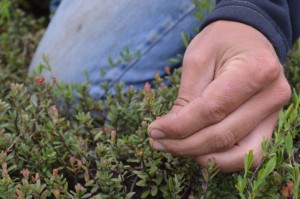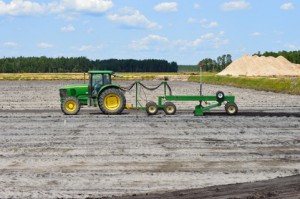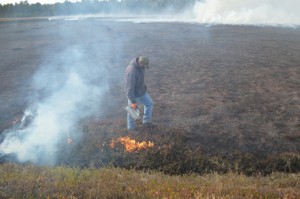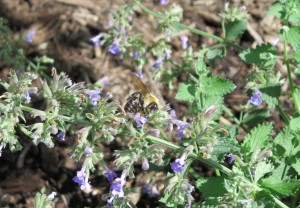This week, we sat down with some researchers to review recommendations and targets for the upcoming season. PIICM Manager Cristina Tassone explains: “A lot of experiments happen here. During the crop review, we can talk to the researchers in more detail as well as discuss recommendations and develop treatment plans. It’s all about teamwork.”
The bulk of the discussion centered around fairy ring, which remains a persistent problem for us. Dr. Peter Oudemans of Rutgers University ran two trials on some Pine Island beds, using aerial technology to track results. The results showed no significant difference between treatments, but as eter indicated in the abstract presented to the ACGA, “it is likely that over time treatment differences will increase.” He plans to continue the experiment, and also give the PIICM team suggestions for going forward. For example, after the ground thaws, the team will take some soil samples from our newly renovated bogs to ensure enough soil was taken out to create a more sterile environment that will keep fairy ring from returning. (According to Peter, renovation guidelines should include hauling out soil one to two inches below the root zone in bogs with a history of fairy ring.)
Attention was also paid to the briar issue: briar can show symptoms of the rust that hosts the fairy ring disease. Rust is not yet carrying the fungus (which is the causal agent) but will become infected. If growers wait too long, the spores on the infected leaves will drop in the bog and could cause fairy ring to appear. “If we kill the top of the plant, the leaves will die, the fungus will die, and there won’t be a host for the fairy ring fungus to infect. It’s more expensive to treat than it is to prevent,” Peter says. So the team discussed timing and targets for several removal options, such as control burning.
There was also some discussion about bee colonies, an important consideration for the growing cycle. Among the ideas: researching creating a habitat to promote more bumblebee activity. Bumblebees are crucial to the cranberry harvest; they work faster, visiting many more flowers per minute. Their large size lets them carry huge pollen loads, allowing longer foraging trips, and achieving better contact with flowers. Larger deposits of pollen promote pollination as well as the formation of more uniform and larger fruit. Perhaps most importantly, bumblebees are naturally attracted to cranberry plants.




